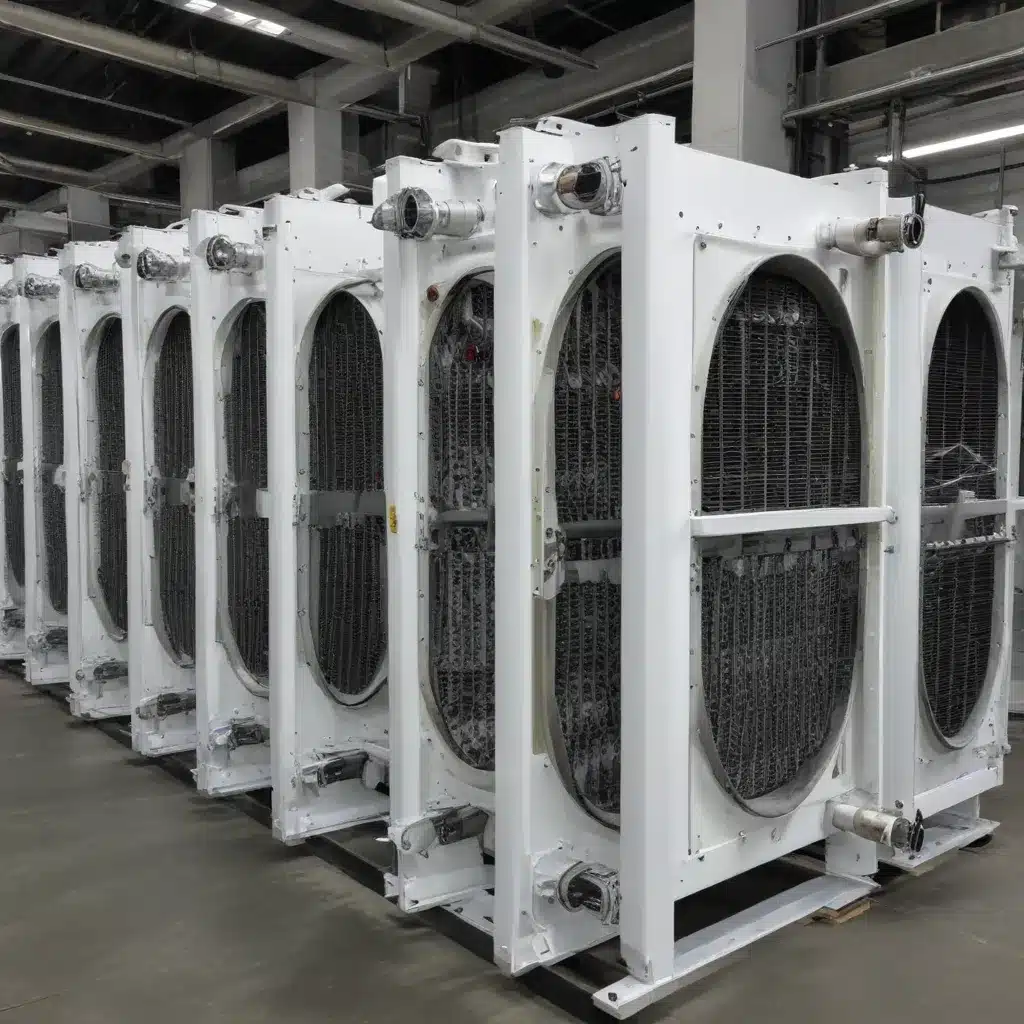
The Changing Landscape of Industrial Cooling
In today’s rapidly evolving business landscape, where sustainability and energy efficiency have become paramount, the role of air-cooled heat exchangers has never been more critical. As companies across diverse industries strive to meet ambitious decarbonization goals, the strategic deployment of these versatile thermal management solutions has emerged as a pivotal lever for driving sustainable operations and unlocking new avenues for cost savings.
The growing emphasis on renewable energy integration and the transition away from fossil fuels have set the stage for a paradigm shift in how industrial processes are cooled and heated. Traditionally, many facilities have relied on energy-intensive cooling systems that contribute significantly to their overall carbon footprint. However, the tides are turning, and forward-thinking organizations are now recognizing the immense potential of air-cooled heat exchangers to optimize their thermal management strategies and align with the broader sustainability agenda.
Optimizing Air-Cooled Heat Exchanger Design for Efficiency
At the core of this transformation lies the continuous evolution of air-cooled heat exchanger design and engineering. As a seasoned expert in this field, I have witnessed firsthand the remarkable strides made in enhancing the performance and efficiency of these systems.
One of the key advancements has been the incorporation of advanced materials and coatings. The use of high-performance alloys and specialized surface treatments has enabled a significant improvement in heat transfer rates, reducing the overall footprint and energy consumption of air-cooled heat exchangers. These innovations have been particularly impactful in industries where space and weight constraints are critical, such as the aerospace and automotive sectors.
Moreover, the advent of computational fluid dynamics (CFD) modeling has revolutionized the design process, allowing engineers to simulate and optimize air-cooled heat exchanger performance with unprecedented precision. By leveraging advanced simulation tools, designers can now identify and mitigate potential bottlenecks, enhance airflow patterns, and maximize heat transfer efficiency – all before the physical implementation stage. This data-driven approach has been a game-changer, empowering organizations to make more informed decisions and achieve superior outcomes.
Maintenance and Performance Optimization Strategies
Alongside advancements in design, the efficient maintenance and operation of air-cooled heat exchangers have become increasingly crucial. Regular inspections, preventive maintenance, and proactive cleaning protocols are essential to ensure these systems continue to operate at peak performance, minimizing energy consumption and maximizing their contribution to sustainable thermal management.
One of the common challenges faced in the field is the gradual buildup of contaminants and fouling on the heat exchanger surfaces. This can significantly impede heat transfer and lead to increased power consumption and operational costs. By implementing robust maintenance schedules and utilizing advanced cleaning techniques, such as high-pressure water jets or chemical treatments, organizations can maintain optimal heat exchanger efficiency and extend their service life.
Additionally, process optimization strategies, such as fine-tuning fan speeds, adjusting airflow patterns, and integrating smart control systems, can further enhance the performance of air-cooled heat exchangers. These measures not only reduce energy usage but also contribute to the overall sustainability of the facility by minimizing greenhouse gas emissions and waste heat generation.
Versatile Applications Across Industries
Air-cooled heat exchangers have proven to be remarkably versatile, finding applications across a wide range of industrial sectors, each with its unique thermal management challenges and requirements.
In the power generation industry, air-cooled heat exchangers play a vital role in cooling steam turbines, generator sets, and other critical equipment. By effectively dissipating waste heat, these systems help improve overall plant efficiency and reduce the environmental impact of power production.
The chemical and petrochemical industries have also embraced air-cooled heat exchangers as a reliable solution for process cooling, condensation, and heat recovery applications. In these high-temperature, high-pressure environments, the ability to tailor air-cooled heat exchanger designs to specific process conditions has been instrumental in optimizing energy usage and minimizing operational risks.
Moreover, the growing prevalence of data centers has fueled the demand for innovative air-cooling technologies. As the computing power and density of these facilities continue to escalate, air-cooled heat exchangers have emerged as a viable alternative to traditional water-based cooling systems, offering enhanced reliability, reduced water consumption, and lower maintenance requirements.
Unlocking the Potential of Waste Heat Recovery
One of the most exciting frontiers in the realm of air-cooled heat exchangers is the integration with waste heat recovery systems. As industries strive to improve their energy efficiency and minimize emissions, harnessing the thermal energy that would otherwise be lost to the environment has become a critical priority.
Air-cooled heat exchangers can play a pivotal role in this endeavor, capturing waste heat from various industrial processes and repurposing it for beneficial uses, such as generating steam, providing process heating, or even producing electricity through organic Rankine cycle (ORC) systems. By effectively integrating air-cooled heat exchangers into waste heat recovery strategies, organizations can unlock substantial energy and cost savings, while also making significant strides towards their sustainability goals.
The potential for waste heat recovery is particularly compelling in industries with high-temperature processes, such as steel manufacturing, cement production, and oil refining. In these sectors, air-cooled heat exchangers can be strategically deployed to capture and repurpose the abundant waste heat, reducing the reliance on primary energy sources and minimizing the environmental footprint of operations.
Embracing the Future of Sustainable Thermal Management
As the world grapples with the urgent need to address climate change and drive the transition towards a more sustainable future, the role of air-cooled heat exchangers has become increasingly pivotal. These versatile thermal management solutions offer a compelling pathway to unlock energy efficiency, support renewable energy integration, and enable the circular economy – all while delivering tangible cost savings and environmental benefits.
By embracing the latest advancements in air-cooled heat exchanger design, maintenance, and integration with waste heat recovery systems, industrial leaders can position their organizations for long-term success and cement their position as sustainability champions in their respective sectors. The journey towards a more sustainable future starts with a commitment to optimizing thermal management strategies, and air-cooled heat exchangers are at the forefront of this transformative shift.

